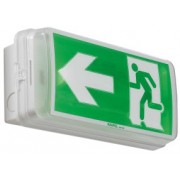Vous n'êtes pas identifié(e).
- Contributions : Récentes | Sans réponse
Pages : 1
#1 [↑][↓] 11-08-2013 11:23:06
- n666eo
- Banni(e)

- Inscription : 16-09-2008
[Réel] Accident 737 Southest
Bonjour à tous,
Update uniquement factuel du NTSB. Pas de piste qui se détache pour le moment.
In its continuing investigation of the July 22 accident in which Southwest Airlines flight 345, a B-737-700, landed hard at New York's LaGuardia Airport (LGA), the National Transportation Safety Board has developed the following factual information:
- The captain has been with Southwest for almost 13 years and has been a captain for six of those years. The captain has over 12,000 total flight hours, over 7,000 of which are as pilot-in-command. In 737s, the captain has over 7,900 hours, with more than 2,600 as the pilot-in-command.
- The first officer has been with Southwest for about 18 months. The pilot has about 5,200 total flight hours, with 4,000 of those as pilot-in-command. In 737s, the first officer has about 1,100 hours, none of which are as the pilot-in-command.
- This was the first trip the flight crew had flown together and it was the second leg of the trip. The first officer had previous operational experience at LGA, including six flights in 2013. The captain reported having flown into LGA twice, including the accident flight, serving as the pilot monitoring for both flights.
- The en route phase of the flight, which originated in Nashville, was characterized by the flight crew as routine. On approach into LGA, the first officer was the pilot flying and the captain was the pilot monitoring. SWA 345 was cleared for the ILS Runway 4 approach.
- The weather in the New York area caused the accident flight to enter a holding pattern for about 15 minutes. The crew reported that they saw the airport from about 5-10 miles out and that the airplane was on speed, course and glideslope down to about 200-400 feet.
- The crew reported that below 1,000 feet, the tailwind was about 11 knots. They also reported that the wind on the runway was a headwind of about 11 knots.
SWA 345 proceeded on the approach when at a point below 400 feet, there was an exchange of control of the airplane and the captain became the flying pilot and made the landing.- The jetliner touched down on the runway nose first followed by the collapse of the nose gear; the airplane was substantially damaged.
- At this point in the investigation, no mechanical anomalies or malfunctions have been found. A preliminary examination of the nose gear indicated that it failed due to stress overload.
- Investigators have collected five videos showing various aspects of the crash landing. The team will be analyzing these recordings in the coming months.
- Parties to the investigation are the Federal Aviation Administration, Boeing Commercial Airplanes, Southwest Airlines, and the Southwest Airlines Pilots Association.
This is a factual update only and no interviews are being conducted.
Source : Site du NTSB
Bons vols !
T.
Hors ligne
Pages : 1